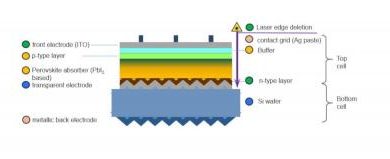Brown University to lead $4 million solar cell research grant
World’s first 2D sheets of organic-inorganic hybrid perovskites grown from a solution
A team led by Brown University researchers has been awarded $4 million by the National Science Foundation to study perovskite solar cells. The research will be performed in partnership with the University of NebraskaâLincoln (UNL) and Rhode Island College (RIC).
The research will aim at better understanding the basic science behind these solar cells, looking for ways to develop new technologies based on that understanding, and investigating scalable production methods that could one day bring perovskite solar cells to market. Another issue the researchers will look to address is the fact that the best performing perovskite solar cells contain lead. The team will look for lead-free perovskite compositions that work equally well.
The grant also includes a substantial outreach and education effort. Students and researchers involved in the project will go to middle and high schools to talk about energy efficiency and green technologies. The project also includes the development of an online college course on solar technologies aimed at people who are interested in entering the green workforce. The grant also provides funding for graduate students and for undergraduate research opportunities.
The award, which will be paid over four years, was made through the National Science Foundation’s Experimental Program to Stimulate Competitive Research (EPSCoR) program.
Lead-freePerovskite applicationsPerovskite SolarFinancial
Above are Brown University to lead $4 million solar cell research grant web publication,Hope can help you.
Perovskite solar cells may recharge electric cars’ batteries

